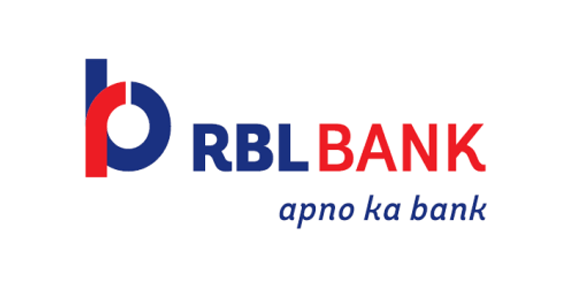Mid-Sized Banks Face a Storm: Navigating the Turbulent Waters of 2024
December 30, 2024, 9:52 am

Location: India, Rajasthan, Jaipur
Employees: 10001+
Founded date: 2017
Total raised: $251.3M

Location: India, Maharashtra, Mumbai
Employees: 10001+
Founded date: 1994
Total raised: $1.15M
The year 2024 has been a turbulent one for mid-sized banks in India. Like ships caught in a storm, these financial institutions have faced significant challenges. The Nifty Bank index has seen stocks of small and mid-sized banks plummet by 29-40% year-to-date. The winds of uncertainty have blown fiercely, driven by concerns over asset quality and profitability.
The primary culprits? A surge in stress within the unsecured loan segment and a bleak earnings outlook. Analysts have raised red flags, warning that banks like IndusInd, IDFC First, and Bandhan are navigating treacherous waters. The microfinance sector, a lifeline for many, has been particularly hard hit. Over-leveraging by borrowers has led to higher delinquencies, creating a ripple effect that threatens the stability of these banks.
As the storm rages on, some mid-sized banks have managed to stay afloat. Federal Bank and City Union Bank have reported strong profitability and growth. Their resilience stands in stark contrast to their struggling peers. The larger banks, too, have weathered the storm better, with steady performance leading to rising share prices.
The challenges for mid-sized banks are multifaceted. Deposit mobilization has been sluggish, and margin pressures have intensified. The cost of funds has risen, squeezing net interest margins (NIMs). These banks have seen a higher compression in NIMs compared to their larger counterparts. The reclassification of penal interest as penal charges has added to the financial strain.
Operational expenses remain elevated for many mid-sized banks. Investments in technology and franchise development, while necessary for long-term growth, have weighed heavily on earnings. The balance between growth and profitability is a tightrope walk, and many banks are struggling to maintain their footing.
The outlook for 2025 remains cautious. Public sector banks (PSBs) are holding their ground, but cyclical concerns loom large. Lower economic growth could lead to increased scrutiny of credit costs, particularly in the SME and MSME segments. Regulatory guidelines, such as expected credit loss (ECL) provisioning, will further complicate matters for PSBs.
Analysts predict that banks like RBL, Bandhan, and IndusInd could face double-digit earnings cuts. In contrast, larger banks may only see moderate reductions. The market is shifting, and investors are advised to tread carefully.
The focus on unsecured credit has also shifted. Following a year of risk weight hikes by the Reserve Bank of India (RBI), lenders are now more cautious. The unsecured credit landscape is fraught with challenges. Delinquencies in personal loans and credit cards have raised alarms. Borrowers are increasingly taking loans from multiple institutions, leading to a precarious situation.
Public sector banks are adopting a conservative approach. They are extending unsecured loans primarily to customers with salary accounts. This strategy aims to mitigate risk in an uncertain environment. The trend is clear: banks are tightening their belts and focusing on customers with proven repayment capacity.
Credit costs are expected to remain high. The stress in the credit card segment is palpable, with some mid-sized banks reporting elevated credit costs. SBI Card, the largest issuer in India, is not immune to these pressures. The company’s credit cost has surged, reflecting the broader industry trend.
As we look ahead, the landscape for mid-sized banks is fraught with uncertainty. The storm may not pass quickly. Analysts are keeping a close eye on the developments in the microfinance sector and the broader economy. The resilience of these banks will be tested in the coming months.
Investors are advised to consider the fundamentals. While some mid-sized banks may struggle, others could emerge stronger. The market is dynamic, and opportunities may arise for those willing to navigate the choppy waters.
In conclusion, 2024 has been a year of reckoning for mid-sized banks in India. The challenges are significant, but so are the opportunities. As the financial landscape evolves, these banks must adapt or risk being left behind. The journey ahead will require careful navigation, strategic decision-making, and a keen understanding of the shifting tides. The storm may be fierce, but with the right approach, mid-sized banks can find their way to calmer waters.
The primary culprits? A surge in stress within the unsecured loan segment and a bleak earnings outlook. Analysts have raised red flags, warning that banks like IndusInd, IDFC First, and Bandhan are navigating treacherous waters. The microfinance sector, a lifeline for many, has been particularly hard hit. Over-leveraging by borrowers has led to higher delinquencies, creating a ripple effect that threatens the stability of these banks.
As the storm rages on, some mid-sized banks have managed to stay afloat. Federal Bank and City Union Bank have reported strong profitability and growth. Their resilience stands in stark contrast to their struggling peers. The larger banks, too, have weathered the storm better, with steady performance leading to rising share prices.
The challenges for mid-sized banks are multifaceted. Deposit mobilization has been sluggish, and margin pressures have intensified. The cost of funds has risen, squeezing net interest margins (NIMs). These banks have seen a higher compression in NIMs compared to their larger counterparts. The reclassification of penal interest as penal charges has added to the financial strain.
Operational expenses remain elevated for many mid-sized banks. Investments in technology and franchise development, while necessary for long-term growth, have weighed heavily on earnings. The balance between growth and profitability is a tightrope walk, and many banks are struggling to maintain their footing.
The outlook for 2025 remains cautious. Public sector banks (PSBs) are holding their ground, but cyclical concerns loom large. Lower economic growth could lead to increased scrutiny of credit costs, particularly in the SME and MSME segments. Regulatory guidelines, such as expected credit loss (ECL) provisioning, will further complicate matters for PSBs.
Analysts predict that banks like RBL, Bandhan, and IndusInd could face double-digit earnings cuts. In contrast, larger banks may only see moderate reductions. The market is shifting, and investors are advised to tread carefully.
The focus on unsecured credit has also shifted. Following a year of risk weight hikes by the Reserve Bank of India (RBI), lenders are now more cautious. The unsecured credit landscape is fraught with challenges. Delinquencies in personal loans and credit cards have raised alarms. Borrowers are increasingly taking loans from multiple institutions, leading to a precarious situation.
Public sector banks are adopting a conservative approach. They are extending unsecured loans primarily to customers with salary accounts. This strategy aims to mitigate risk in an uncertain environment. The trend is clear: banks are tightening their belts and focusing on customers with proven repayment capacity.
Credit costs are expected to remain high. The stress in the credit card segment is palpable, with some mid-sized banks reporting elevated credit costs. SBI Card, the largest issuer in India, is not immune to these pressures. The company’s credit cost has surged, reflecting the broader industry trend.
As we look ahead, the landscape for mid-sized banks is fraught with uncertainty. The storm may not pass quickly. Analysts are keeping a close eye on the developments in the microfinance sector and the broader economy. The resilience of these banks will be tested in the coming months.
Investors are advised to consider the fundamentals. While some mid-sized banks may struggle, others could emerge stronger. The market is dynamic, and opportunities may arise for those willing to navigate the choppy waters.
In conclusion, 2024 has been a year of reckoning for mid-sized banks in India. The challenges are significant, but so are the opportunities. As the financial landscape evolves, these banks must adapt or risk being left behind. The journey ahead will require careful navigation, strategic decision-making, and a keen understanding of the shifting tides. The storm may be fierce, but with the right approach, mid-sized banks can find their way to calmer waters.

